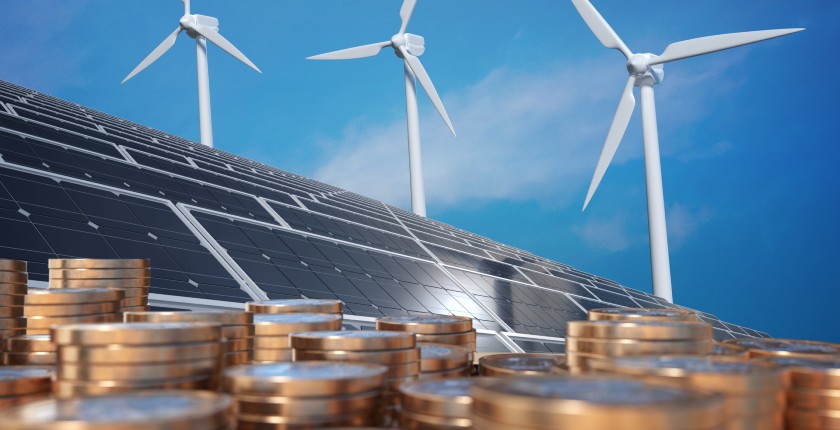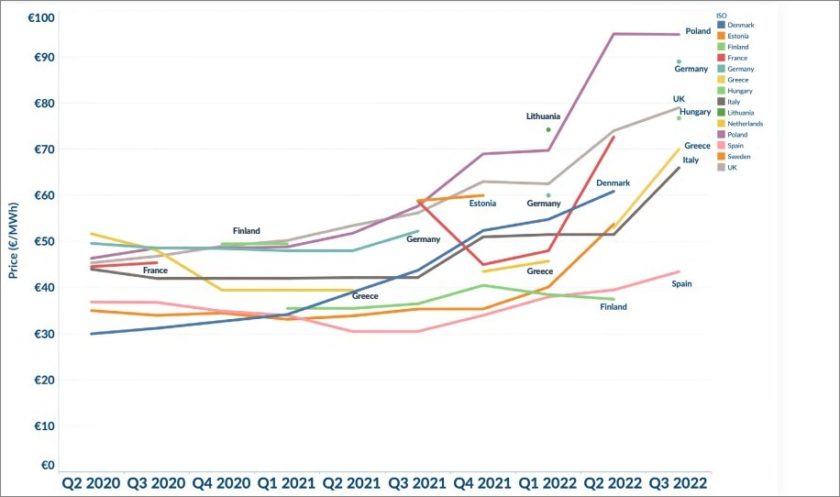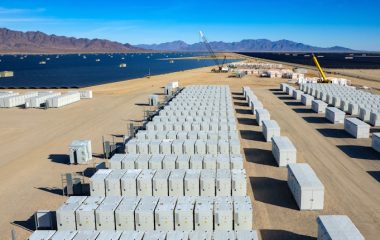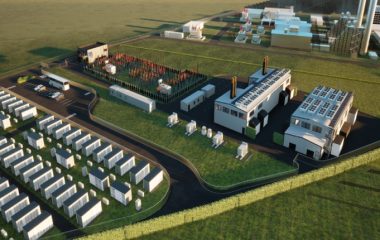
Photo: iStock
Power purchase agreement market platform operator LevelTen Energy said its index of price offers from renewable energy project developers in Europe for corporate buyers rallied 11.3% in the third quarter alone and a stunning 51% on an annual basis. But demand for PPAs is resilient and high despite all the challenges on the paths to energy independence from Russia and carbon neutrality.
LevelTen Energy said its price subindex of solar power prices in 16 European countries in the market for power purchase agreements or PPAs grew 15.4% to EUR 68.57 per MWh in the third quarter compared to the rise of just 8% for the wind power benchmark, to EUR 78.5 per MWh. However, the year-over-year increases are not that far apart: 53.3% against 49.1%.
The combined measure advanced 11.3% in the last reporting period and 51% on an annual scale, to EUR 73.54 per MWh. At the same time, the equivalent benchmark for mid- to long-term deals in the United States rallied 9.6% from July through September to USD 45.93 per MWh, which is 34% above the level from one year before.
Regulatory uncertainty exacerbates demand pressures
Russian gas supplies dwindled 82% in 12 months, putting upward pressure on prices, which were already on the rise due to escalating demand and development costs, according to the PPA market platform operator. A dizzying array of policy proposals, paired with a general lack of specifics, has created profound regulatory uncertainty for the renewables development community — making it increasingly difficult for developers to assess the long-term economics of PPAs, LevelTen warned.
Soaring energy prices make non-PPA options more appealing for developers while, at the same time, capacity supply growth is being held back by permitting and interconnection issues
Extremely high wholesale electricity prices continue to provide tempting non-PPA options for developers, the analysis showed. Such an environment dramatically lowers the risks associated with “going merchant” (selling into the wholesale market) with greater portions of their projects’ capacity, and banks — growing more accustomed to renewable economics and current wholesale conditions — are increasingly comfortable financing projects on a merchant basis, the document’s authors pointed out.
They added it could reduce the supply of available PPAs for corporate offtakers as demand for PPAs continues to skyrocket, leading to further price increases.

Number of requests for proposals triples from third quarter of 2021
“Corporations can use PPAs to stabilize their energy costs, meet their emissions reduction targets, and demonstrate their commitment to sustainability and energy independence. That’s why despite higher PPA prices, we’re still seeing strong demand for PPAs. LevelTen has run almost three times as many requests for proposals (RFPs) as last year on behalf of offtakers seeking PPA contracts. The challenge is that supply can’t keep up because of permitting and interconnection issues,” the firm’s Vice President for Europe Flemming Sørensen said.
Offtakers are scrounging for medium to long-term electricity supply deals at fixed prices to stabilize their energy costs
European markets are stress-tested as the region is simultaneously figuring out how to rapidly achieve energy independence from Russia and aiming to create a carbon-neutral economy by 2050, but demand for PPAs remains high nevertheless, according to LevelTen. The surge in offered prices was led by Germany, Greece, Hungary, Italy and the United Kingdom.
The P25 index methodology takes data on price offers from owners of renewable energy projects under development for corporate clients and not the prices in transactions. The symbol refers to the most competitive 25th-percentile offer prices, where the majority of PPA deals normally occur.
The most competitive marketplace offers or market clearing prices can be significantly lower than the P25 index. The blended European yardstick is an average of P25 wind and solar PPA price indexes in all countries.









Be the first one to comment on this article.